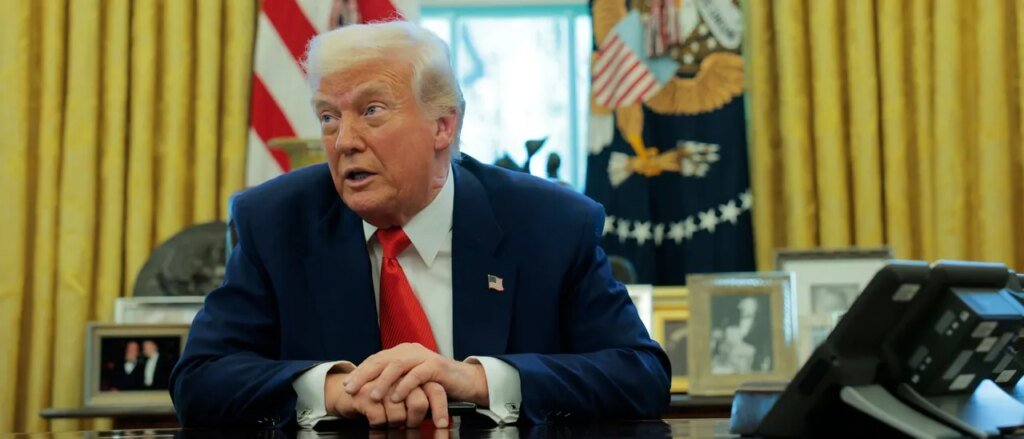Trump’s April 2 tariff release is nearing its conclusion, but the Court of Appeals has ruled that using the International Economic Emergency Rights Act (IEEPA) for worldwide tariffs is illegal. As a result, the initial trade agenda may endure.
So far, neither Treasury Secretary Scott Bescent nor the President seems overly concerned about the tariffs being overturned. It’s possible they have a backup plan. You might recall that Bescent counted on around $300 billion in annual tariff revenue to support tax cuts, which is quite a hefty figure.
The U.S. has collected about $300 billion, with corporate tax revenue projected to be higher than the two minimum tax brackets below $50,000 in 2024.
A federal appeals court hearing was held recently, and government lawyers faced off against an 11-judge panel, many of whom were appointed by Trump’s political opponents, including Bush, Obama, and Clinton. The core issue at hand is whether the IEEPA even permits such customs duties. Schmate, the government lawyer, suggested that the IEEPA was intended for much more limited use, as seen during the Nixon era when it was applied to one specific company and one country. This is quite different from Trump’s broader use of tariffs to reshape trade dynamics.
Interestingly, the term “customer” isn’t mentioned in the IEEPA act. However, it does grant the President authority to impose restrictions to tackle emergencies, leading to ongoing discussions in the courts about the IEEPA’s intent.
Currently, the court holds that Trump’s tariffs under the IEEPA are too expansive and not lawful. If the appeals court concurs with the lower court, it could jeopardize the revenue strategy that Trump has in place, which is crucial for Republican tax policies.
These tariffs have faced challenges, especially since their controversial release.
A month ago, a small wine importer in NYC initiated a lawsuit against Trump in the International Trade Court, arguing that he cannot apply blanket tariffs globally under the IEEPA. The White House has since filed an appeal, and we’re waiting for the outcome, which should arrive soon, possibly by September.
If the court declares these tariffs illegal, many anticipated trade deals will be invalidated.
The 15% EU tariff depends on IEEPA as well, so its fate is also uncertain.
Should the Court of Appeal strike down these tariffs, I suspect Trump may escalate the issue to the Supreme Court. They might interpret it as a matter of “limiting imports” and “regulating imports,” which could ultimately be left to the President’s discretion.
If not, Trump could turn to a similar trade law, known as Section 122, which involves a temporary 15% tariff that requires Congress’s approval for extension. This could serve as a means to engage Republican leaders to legislate tariffs as revenue-generating measures without having to draft a new bill.
Some companies may quickly seek refunds, but these would be on hold pending a final court ruling. If refunds do happen, it could create significant issues for the Treasury and reflect poorly on Trump.
Regardless, the overall agenda initiated by Trump is likely to continue. If the IEEPA is dismantled, trade agreements with countries like Japan, South Korea, and the EU might revert to the previous 25% tariffs originally established.
Ford’s CEO, Jim Farley, remarked on Bloomberg TV that the existing 15% tariff is insufficient for making domestic manufacturing competitive, suggesting it should be closer to 30% to 40%.
Section 232 tariffs, commonly referred to as “departmental tariffs,” relate to vehicles and key metal imports. These tariffs are facing fewer legal challenges compared to the IEEPA tariffs.
Still, the revenue from Section 232 tariffs isn’t as robust as Bescent and Trump require for financing their proposed tax cuts. It seems that sometimes the importance of income generation overtakes other considerations.
If the court overturns this tariff policy, it significantly undermines their income forecasts, leaving the Trump administration with a choice: either safeguard their revenue source or confront a growing fiscal deficit.
As Vladimir Sigrelli from Breton Woods Research pointed out, losing tariff revenue creates a major gap that even tax cuts can’t cover.
They’re facing a $19.9 billion shortfall, and it’s likely they have contingency plans involving other trade enforcement authorities or risk damaging the U.S. creditability in meeting its obligations.







